Thirlmere
Conifer clad Thirlmere reservoir, in the shadows of Helvellyn, provides the city of Manchester with it's water and was created in 1894, when the area was dammed and flooded, submerging the Lakeland villages of Amboth and Wythburn.
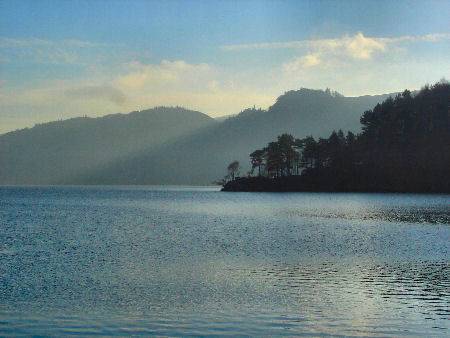
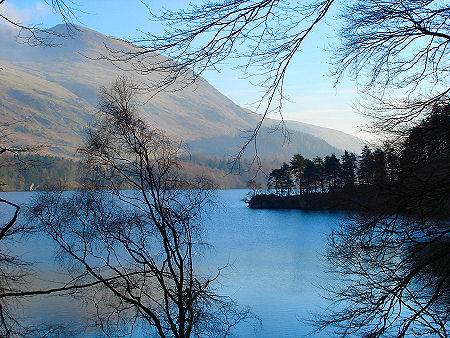
Plans to create the reservoir caused much consternation at the time, the movement against creating Thirlmere found a figure head in the Victorian poet, artist, critic and conservationalist, John Ruskin, who indignantly stated that 'Manchester should be put to the bottom of Thirlmere.' The lake is now owned by United Utilities, and there are many lay-bys and parking areas provided along the roadside. The minor road, which runs along its west side is particularly spectacular.
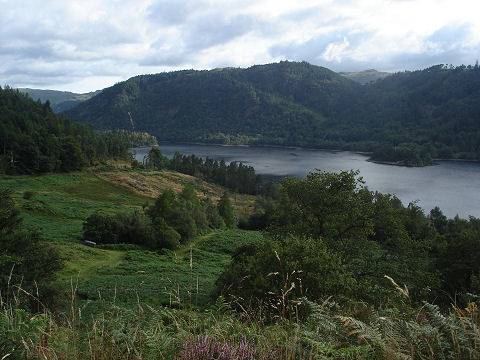
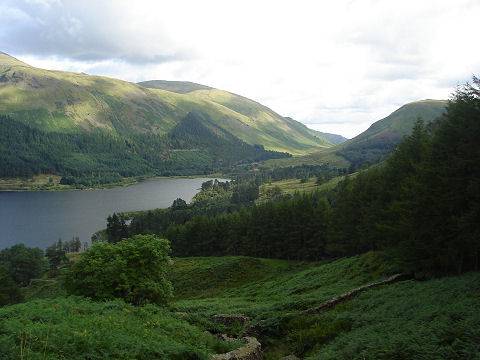
The reservoir is four miles long and half a mile wide and is surrounded by 2,000 acres of superb coniferous forest, mainly spruce and larch, which was planted in 1908 and bestows a Scandinavian appearance on the area. Efforts are now being made to introduce more deciduous trees. Much of the woodland is open to the public and there are good waymarked trails, offering superb views, at Swirls, Launchy Gill and Harrop.
The impressive Helvellyn Massif lies to the east of Thirlmere. There are a number of fells to the west, including Armboth Fell and Raven Crag, both of which provide spectacular views of the lake.
The Helvellyn Massif from Thirlmere. Click to enlarge
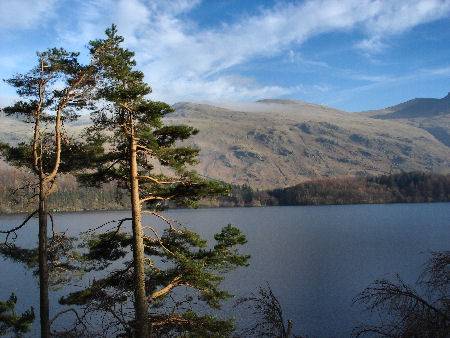
The dam, constructed by the Manchester Corporation, is situated at the north end of the lake, and has a plaque commemorating the start of the work on 22 August, 1890. Stone for construction of the Dam was quarried at Longridge in Lancashire and delivered by train to Windermere.
Wythburn Church
At the southern end of the reservoir stands picturesque Wythburn Church and a solitary group of houses, all that now remain of the otherwise submerged village of Wythburn. The church contains an interesting exhibition on the history of the area.
Wythburn Church was built in 1640 and later restored in 1872. The stained glass windows depict the seventh century Celtic saints - St Cuthbert, and St Herbert. . St Herbert brought Christianity to the Lake District and built a hermitage on an island on Derwentwater.
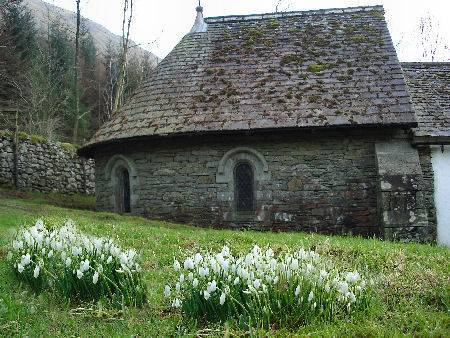
A popular ascent up to Helvellyn commences from the church, which Wordsworth, Sir Walter Scott and Humphry Davy once undertook together.
Thirlmere from the south west
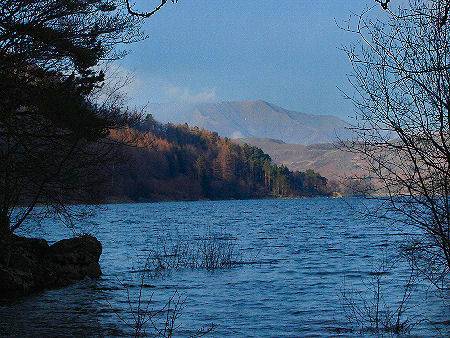
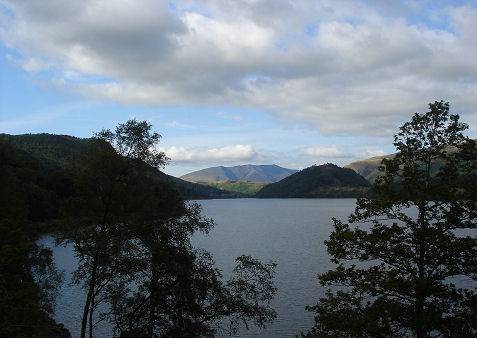
The nearby Castle Rock of St. John was the setting for Sir Walter Scott's imaginative 'Bridal of Triermain' which includes all the elements of legend, with King Arthur and Guinevere. The rock derives its name from the fact that the natural configuration of the crags resembles a castle. More on St.John's-in-the-Vale
The village of Thirlmere, consisting of the four hamlets of Thirlspot, Stanah, Legburthwaite and Dalehead, has some facilities including a youth hostel, inns, a post office and village hall.
Thirlmere Wildlife
The forests around Thirlmere plays host to both red deer (Cervius elaphus) and red squirrel. Red deer, indigenous to the British Isles are the largest mammal in Britain. In summer the coat is dark red or brown, with a cream underbelly, some have a few spots, particularly along the spine.
The red deer's winter coat is either dark brown or grey. The calves are spotted at birth. The nocturnal roaring of the challenging stags during the rut and the clash of antlers is one of the most exciting sounds of the forest.

The native red squirrel (Sciurus vulgaris leucourus) is a rapidly declining species in Briain due to the introduction of their larger American cousins, the grey squirrel, who rapidly take over their habitats.
The squirrels build large nests, called dreys, often in the forks of trees, they are round structures, built up of leaves, twigs, dried grass and moss. Their young, known as kittens, are usually born in litters of 2-3 in the sping and are blind at birth. Signs to watch for are dreys, chewed pine cones and scratch marks on the bark of trees.
Woods at Thirlmere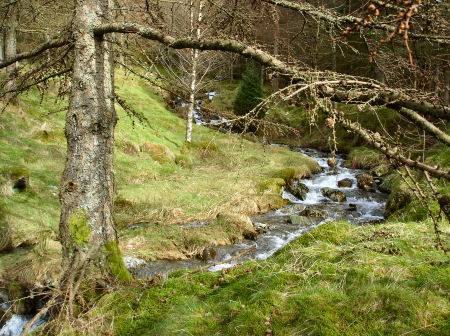
The Lake District is one of the few remaining areas in England where the red squirrel can still be found. The rampant grey squirrels are rapidly increasing in number in the South Lakes, but there are still large numbers of red squirrels within the North Lakes. A five-year campaign has recently been drawn up to protect red squirrels in the Lake District.
